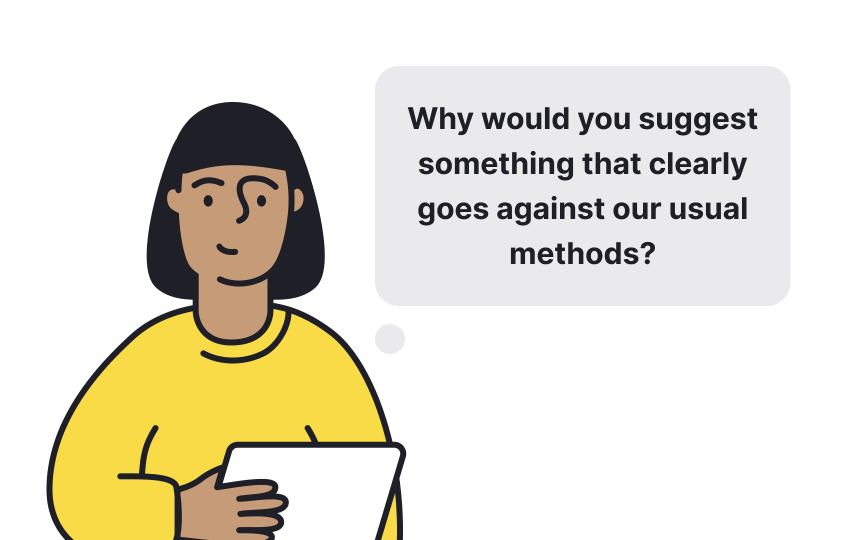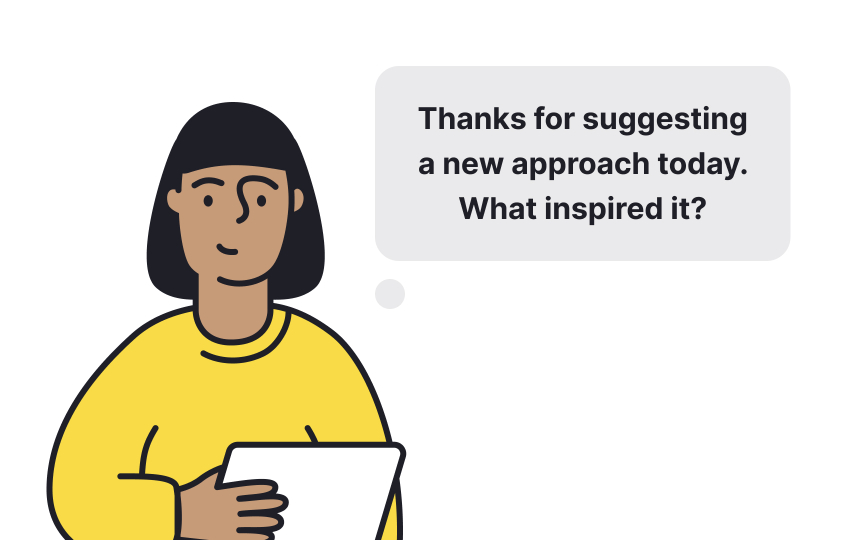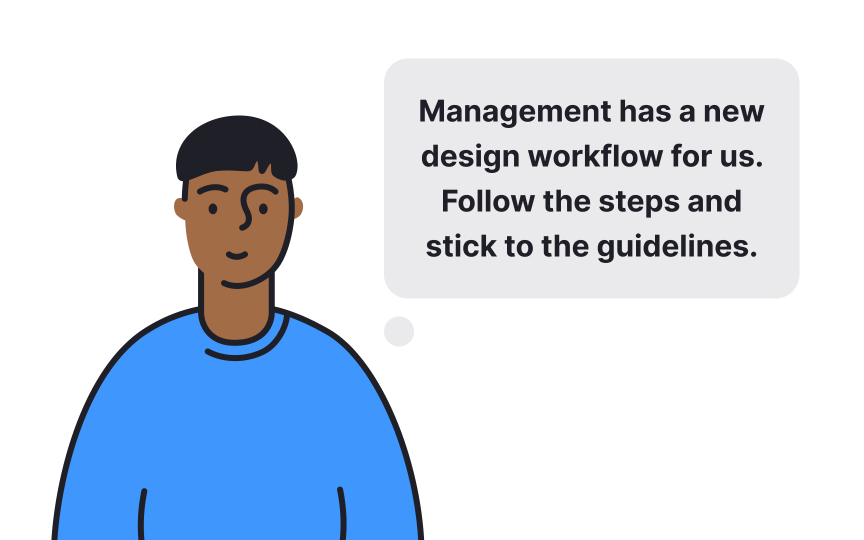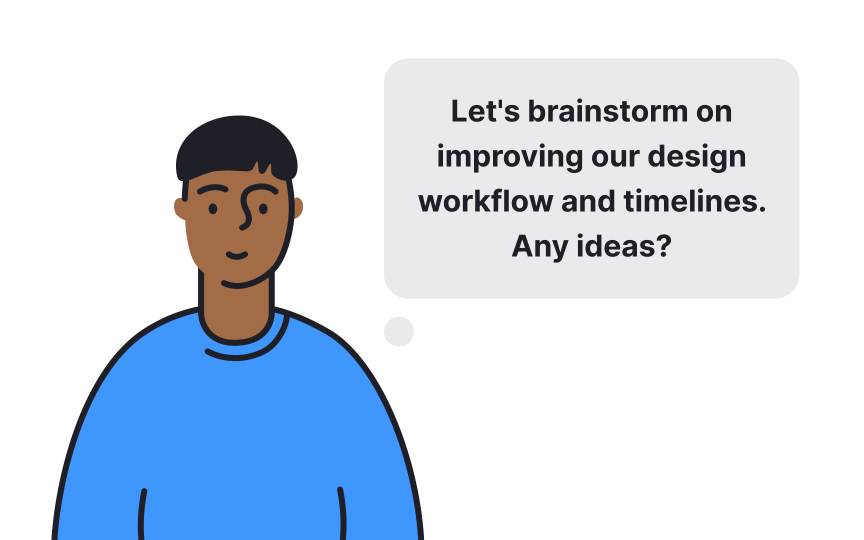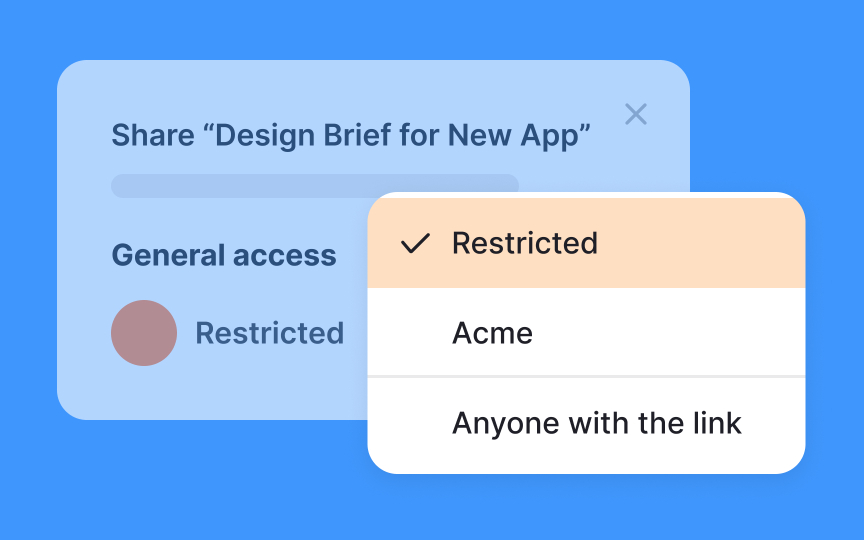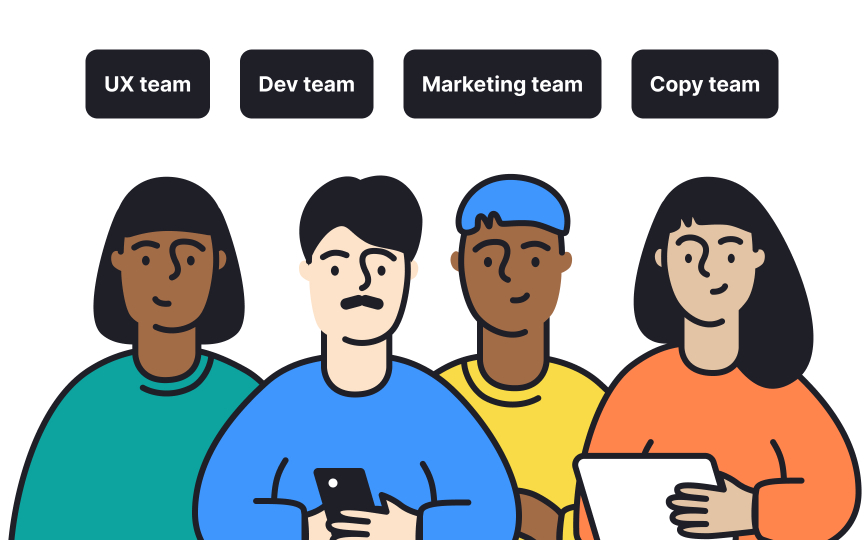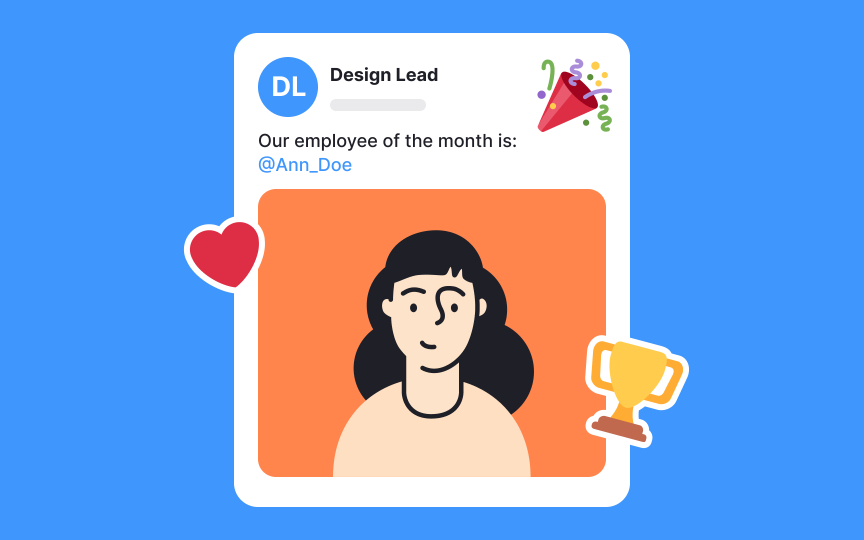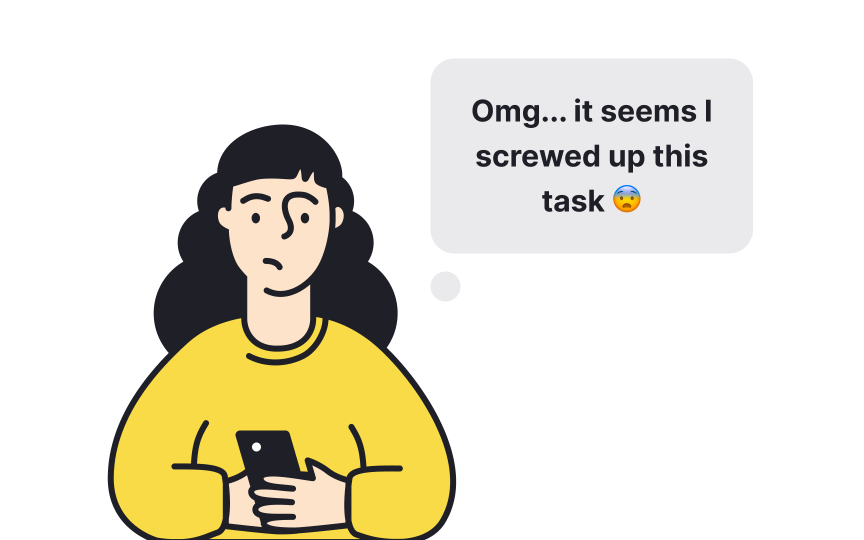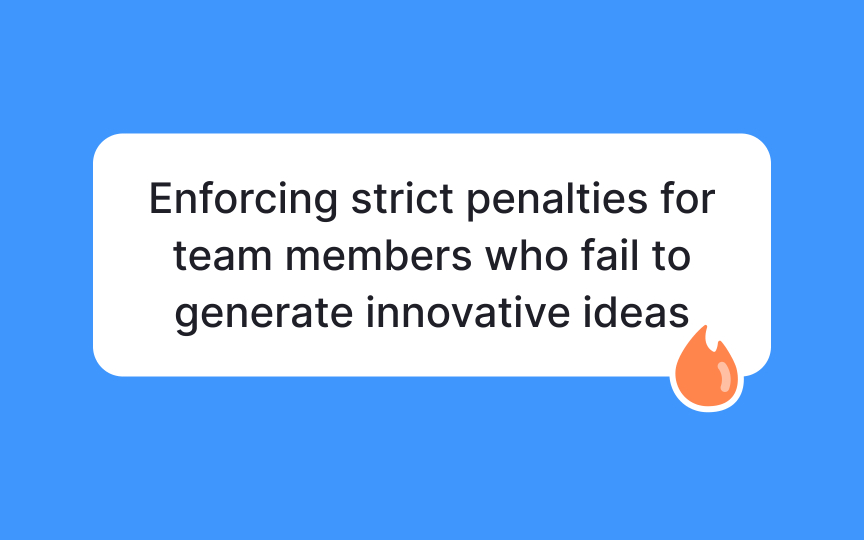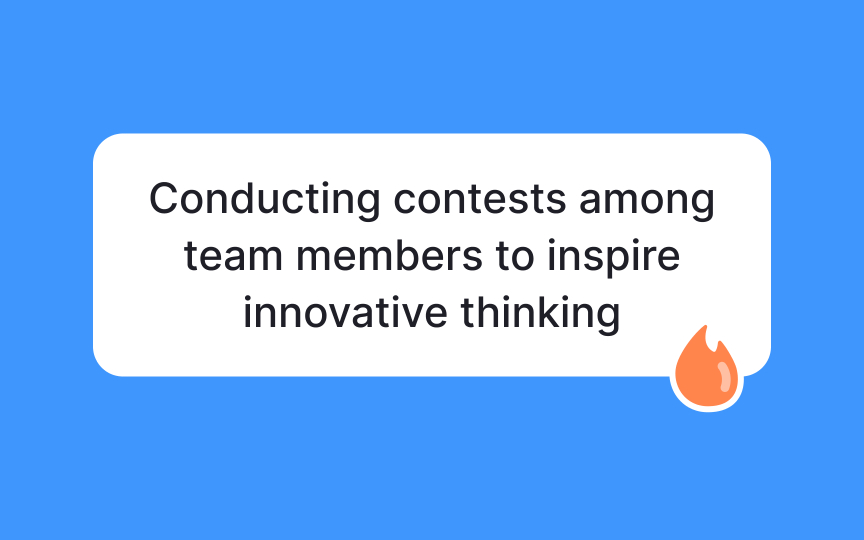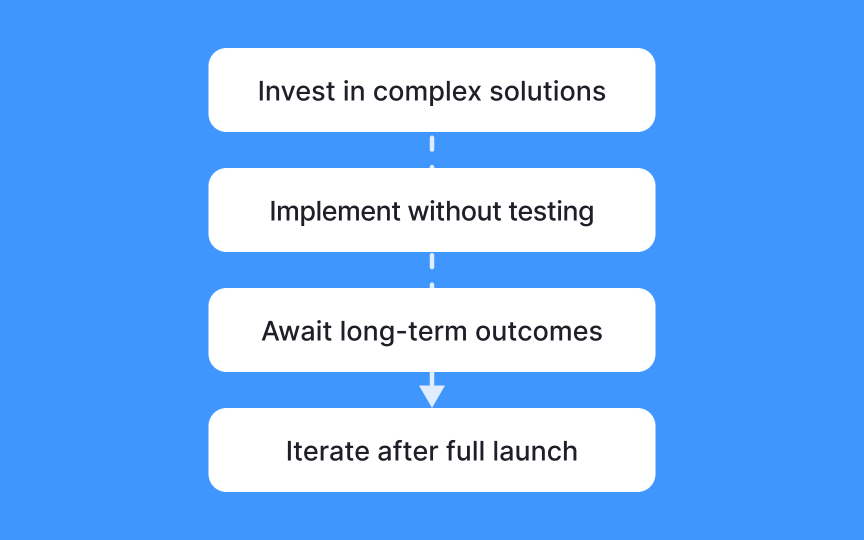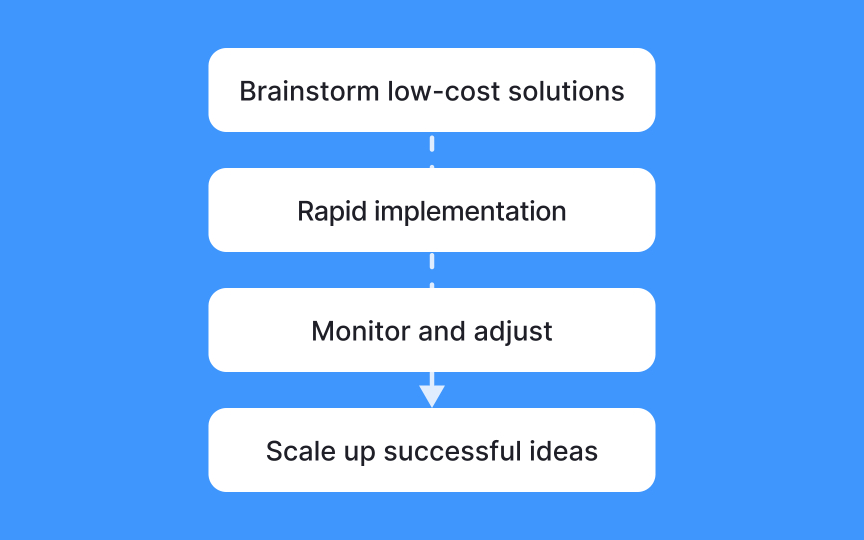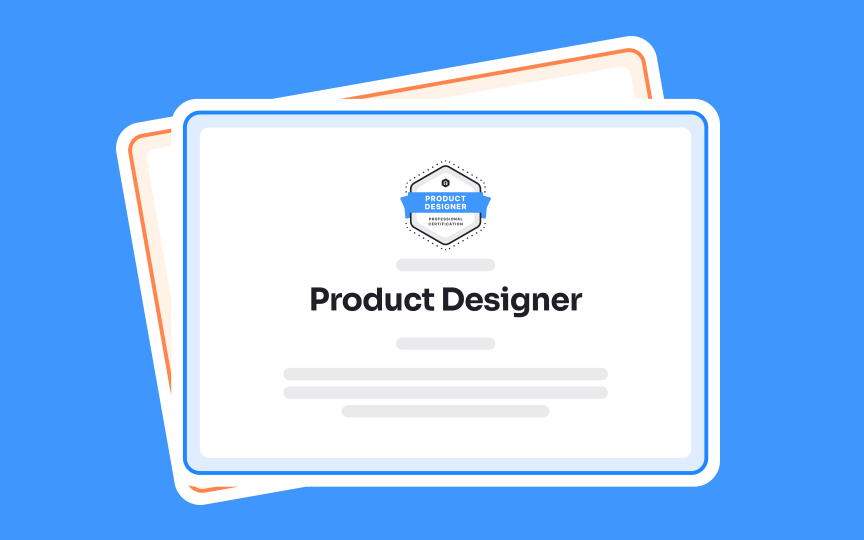Innovation Culture in Design Teams
Explore strategies to transform the way your design team thinks and works
Innovation keeps you ahead of the curve and relevant in a fast-paced market. But innovation isn't just about having a few lightbulb moments. It's about creating an environment where these moments are more likely to happen. This lesson dives into what it takes to spark and maintain an innovative spirit within design teams. We'll discuss practical ways to make your team environment a hotbed of ideas, from setting up the right vibe to ensuring everyone feels heard. By the end, you'll know exactly what it takes to keep the creative fires burning in your team.
Creating psychological safety in your team means ensuring everyone feels secure enough to express ideas, ask questions, and even make mistakes without worry. Teams, where members feel safe, are more likely to take risks that can lead to breakthroughs and are generally more successful.
Here’s how you can create psychological safety in your teams:
- Invite team members to speak up about their ideas and concerns. Respect and listen to different viewpoints.
- Recognize that mistakes are part of learning. Share your experiences and encourage the team to view failures as opportunities for growth.
- Allow space for all ideas, even the untested ones. Ask tough questions supportively.
- Train the team in giving and receiving feedback constructively. Promote honest and respectful conversations.
- Acknowledge both small wins and major achievements to build a culture of gratitude and trust.[1]
Implementing a flatter hierarchy can boost innovation by making communication more direct and decision-making faster. In a flatter structure, fewer levels of management separate the top from the bottom, meaning ideas and feedback travel quicker across the organization.[2]
Here’s how to implement it:
- Reduce layers: Minimize the levels of management. Fewer layers mean fewer barriers to communication and decision-making.
- Encourage decision-making: Give team members more responsibility and the authority to make decisions wherever possible. This boosts their confidence to innovate.
- Encourage open communication: Promote direct communication across all levels of the organization. When everyone can speak freely with anyone, ideas flow more easily.
- Support informal interactions: Create spaces and opportunities for casual conversations. Often, the best ideas come up in an informal environment.
- Encourage collaboration: Encourage teamwork across different groups. Diverse perspectives lead to better problem-solving and more creative solutions.
Team members feel safer sharing their ideas, feedback, and even concerns when they see that information flows freely and transparently within the company. Everyone feels they have a voice and a stake in the company's direction, which can lead to more innovative solutions and a stronger, more connected team.
To achieve this, consider using online collaboration tools that allow everyone in the team to access and interact with information openly. Instead of hiding important documents and strategies in hard-to-reach places, use platforms where these can be easily found, read, and commented on by anyone.
By bringing together team members from different departments, such as marketing, engineering, and product development, you can tap into a wide range of skills and perspectives. This diversity in thought and experience often leads to more creative solutions and breakthrough ideas.
To support this kind of collaboration:
- Organize regular brainstorming sessions and workshops where team members from various functions are invited to share their insights and ideas
- Set up project teams that include representatives from each department to work on specific initiatives
- Whether it’s a physical room or a digital meeting room, create shared spaces to encourage spontaneous interaction and idea sharing regularly
- Hold regular meetings for teams to present progress and address challenges for collective problem-solving
- Organize interdepartmental training sessions and workshops focusing on team-building or skill enhancement
- Celebrate project success as a unified team, emphasizing the power of collaboration
Celebrating and recognizing team members who generate and pursue innovative ideas encourages a culture of creativity and risk-taking. When team members feel appreciated for their efforts, they're more likely to continue exploring new ideas and solutions, contributing to the overall growth and success of the company.
Here are some ways to celebrate and recognize team members:
- Give public acknowledgment: Use meetings, company newsletters, or social media platforms to highlight the efforts of team members who bring forward new ideas.
- Recognize unsuccessful ideas: Even ideas that don't pan out can contribute to innovation by sparking new thoughts or learning. Acknowledge these efforts to encourage a culture where team members aren't afraid to take risks.
- Offer rewards: Provide incentives like bonuses, extra time off, or gift cards as tangible recognition of their innovative efforts.
- Create an innovation award: Establish a regular award for innovative ideas, encouraging ongoing creativity and participation.
- Provide development opportunities: Offer training or professional development opportunities as a reward, supporting their growth and encouraging continued innovation.
Creating a culture of innovation requires helping your team learn from failures. Here’s how to do it:
- Normalize failure: Start by changing the perspective on failure. Emphasize that each failure is a stepping stone to success and an integral part of innovating.
- Encourage open discussion: Create a
safe space for team members to share what went wrong and why. This can be done through regular retrospective meetings where everyone feels comfortable discussing mistakes without judgment. - Document lessons learned: Keep a record of mistakes and the insights gained from them. This can guide future projects and prevent repeating the same errors.
- Celebrate efforts: Acknowledge and appreciate the team's effort, even when results aren't as expected. This reinforces a positive mindset towards taking risks.
To help your team understand the importance of innovation:
- Start by explaining that innovation is not just about creating new products or services but about finding new ways to solve problems and improve processes. This can lead to better efficiency, higher quality, and new opportunities that keep your product competitive.
- Let your team know how their innovative efforts will be implemented. Outline the steps from idea generation to execution, so they see how their contributions fit into the bigger picture.
- Make sure to define the end goals — whether it’s increasing customer satisfaction, reducing costs, or entering new markets.
- Emphasize that innovation is a team effort and every idea counts. Encourage them to think creatively and assure them that their creative contributions are valued and vital for the team’s success.
- Organize fun competitions among team members to solicit innovative ideas and inspire out-of-the-box thinking.
Many teams shy away from innovation thinking it requires a lot of resources. However, considering a lean approach to innovation can be highly effective for teams looking to maximize impact while minimizing costs. This method focuses on developing solutions that are not only cost-effective but also quick to implement using minimal resources.
Here’s how it works:
- Start by identifying key areas where improvements can make a significant impact.
Brainstorm solutions that require the least amount of resources and time to execute. It’s all about making the most of what you have and avoiding over-complication.- Implement these solutions in small, manageable steps and monitor the results closely.
This allows you to make adjustments along the way, ensuring that the innovations are truly effective and sustainable.
Providing your team with training and development opportunities enhances their skills and knowledge. In turn, they’ll be able to create innovative solutions that address complex problems. This not only leads to better products but also boosts your organization’s ability to increase revenue and retain clients.
You can do this by offering training programs, bootcamps, workshops, and continuous learning opportunities to help your design team to grow professionally. This also gives them the added benefit job satisfaction and prepares them for internal promotions, contributing to a motivated and committed workforce.
Keep in mind that by prioritizing the education of your design team, you're investing in both the immediate improvement of your products and the long-term success of your organization.[3]
